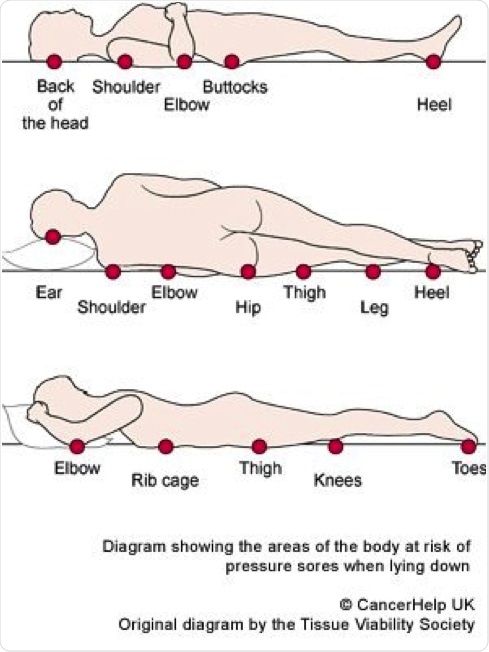
How to Prevent Pressure Ulcers in Local Communities
Over the last few years, the NHS has started focusing on the area of pressure ulcer prevention with some outstanding results in hospitals across the UK. However, this good work has mostly remained with the hospital environment, not reaching the great number of people who could be considered at risk of developing pressure ulcers who are cared for, formally or informally, out in the local communities.
Education and Prevention Strategies
It is important to assist organizations to develop strong education and prevention strategies that can be connected to quality of care indicators. Only by ensuring that the current generation of carers and those who are at risk are educated can there be a real impact on preventing the occurrence of avoidable pressure ulcers in the communities.
There are five key areas that need to be looked into when attempting to prevent pressure ulcers, all of which are the fundamentals of providing quality care: skin inspections, incontinence, reduced mobility, feeling unwell and taking on sufficient food and drink. These form the foundation of the SSKIN bundle which is an all-inclusive tool used to evaluate the level of risk in a hospital environment
The best course of action is to observe each of these areas and then react if and when one notices non-blanching (i.e. not going white under light pressure) red skin. By responding early to red skin in this way, one has the ability to be able to alter the outcome for an individual.
Education is certainly the key—the more people know of what to look out for, the more likely the community are to be proficient at preventing pressure ulcers from occurring in the first place. These are complex wounds that can take several years to heal and cause an enormous amount of suffering, so anything that one can do to lower the risk for the people one loves and cares for, the better it will be for all.

Conclusion
There is plenty of information to keep in mind in relation to preventing pressure ulcers, but it is simple information and one does not need any professional knowledge to have a positive impact.
 About React to Red Skin
About React to Red Skin
The prevention of avoidable pressure ulcers in the community is one of the biggest challenges that care organizations face - a challenge which currently costs the NHS and care organizations in the UK around £6.5 billion per year.
Pressure ulcers affect around 700,000 people in the UK every year and many of these will develop whilst an individual is being cared for in a formal care setting (hospital, nursing home or care home). The reality is that many pressure ulcers are avoidable if simple knowledge is provided and preventative best practice is followed.
React to Red Skin's aim is to provide some simple solutions to some of the challenges faced and to provide education about the five key things that can be done in order to reduce the risk of an individual developing a pressure ulcer.
Sponsored Content Policy: News-Medical.net publishes articles and related content that may be derived from sources where we have existing commercial relationships, provided such content adds value to the core editorial ethos of News-Medical.Net which is to educate and inform site visitors interested in medical research, science, medical devices and treatments.
Last updated: Nov 7, 2018 at 9:18 AM






















.png)











No hay comentarios:
Publicar un comentario